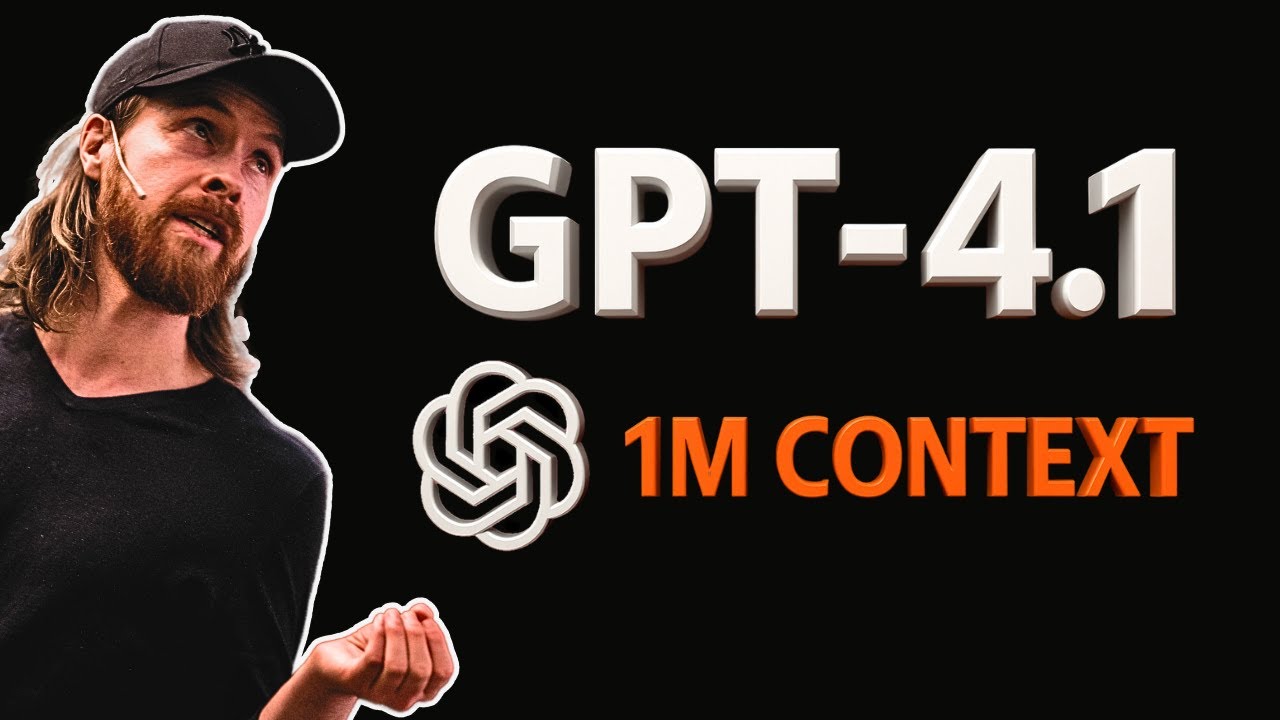The video reviews OpenAI’s GPT-4.1, highlighting its improvements in coding, instruction following, and a groundbreaking 1 million context window, while comparing its performance to competitors like Claude 3.7 and Gemini 2.5 Pro. Although GPT-4.1 demonstrates impressive capabilities, particularly in speed and efficiency, it falls slightly short in detail-oriented tasks compared to Claude 3.7, with the presenter expressing interest in the potential of the smaller nano model for real-time applications.
OpenAI recently released GPT-4.1 in the API, aiming to compete with other models like Claude 3.7 and Gemini 2.5 Pro. The new model boasts improvements in coding, instruction following, and long context handling, with a notable feature being its 1 million context window, which is a first for OpenAI. The pricing for GPT-4.1 is also more competitive compared to its predecessors, making it an appealing option for developers. The video explores various aspects of the model, including its performance benchmarks and the introduction of two smaller models, mini and nano.
The presenter begins by testing GPT-4.1’s capabilities with a classic coding task involving a bouncing ball affected by gravity and friction. Initial impressions indicate that GPT-4.1 is fast and efficient, performing well in comparison to both Claude 3.7 and Gemini 2.5 Pro. While the results are similar across the models, GPT-4.1’s dark mode feature is highlighted as a positive aspect. The presenter notes that the performance is consistent, and the model’s speed is a significant advantage, especially since it is not primarily a reasoning model.
Next, the video shifts focus to GPT-4.1’s multimodal capabilities, where the presenter attempts to recreate a landing page from an uploaded image. The model successfully generates code for the page using frameworks like Next.js and CSS. Although there are some differences in aesthetics and font choices compared to the original page, the output is generally impressive. The presenter also tests the model’s ability to iterate on the design, making adjustments to the text color and adding a matrix rain effect, which showcases the model’s flexibility in following instructions.
The video then compares GPT-4.1’s performance with Claude 3.7 in generating a similar landing page. While both models produce satisfactory results, Claude 3.7 is noted for its attention to detail, such as attempting to download the exact font used in the original design. The presenter finds that while GPT-4.1 performed well, Claude 3.7 edged out slightly in this particular task. This comparison highlights the strengths and weaknesses of both models in practical applications.
Finally, the presenter explores GPT-4.1’s ability to create a server for generating videos using a specific prompt. Despite some initial challenges and debugging issues, the presenter finds that Claude 3.7 handles the task more smoothly, with no build errors and a successful connection to the server. While GPT-4.1 shows promise, the presenter expresses a greater interest in the speed of the nano model for real-time applications. Overall, the video provides a comprehensive first impression of GPT-4.1, showcasing its capabilities while also acknowledging areas where other models may excel.
